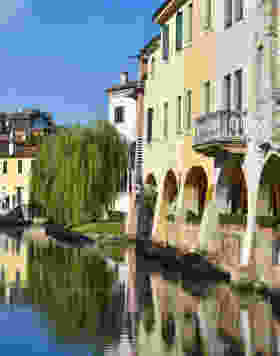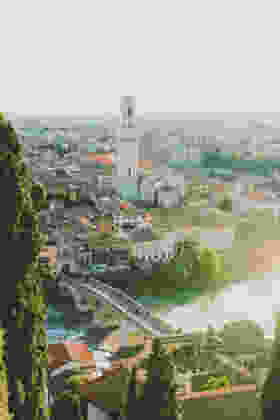Overview

The city of Vicenza, with a population of approximately 115,927 residents, is situated in the Veneto region of northern Italy.
Vicenza is renowned for its architectural masterpieces designed by the famous Renaissance architect Andrea Palladio.
The city's historic center showcases Palladian villas, palaces, and churches, including the iconic Basilica Palladiana and the Villa Capra, also known as 'La Rotonda.' Vicenza's architecture and urban design have had a significant influence on Western architecture.
Visitors can explore the city's rich cultural heritage and enjoy the beauty of Palladian architecture.
The larger Vicenza metropolitan area comprises 114 towns (comuni) and covers an area of 272.253 km2.
The population density is 317 inhabitants per km2, making it somewhat densely populated.
The male to female ratio is 1.00:1.03.
Vicenza is a medium-sized city in Veneto, in northeastern Italy, and the capital of the namesake province.
The city and the surrounding countryside and hills are particularly famous for the many works, and particularly the villas, by Andrea Palladio; a group of Palladio buildings are a UNESCO World Heritage Site.
Search for:
Climate
The province of Vicenza receives on average 228 hours of sunshine per month, or 7.6 hours of sunshine per day.NaN This is 3.39% less than the average for Italy and 0.76% more than the average for the region of Veneto.Throughout the year, it rains on average 7.83 days per month, which is an ordinary amount of precipitation for an Italian province.
During the autumn and winter season, there are usually 6.48 days per month with fog and 3.06 cold days per month with perceived temperatures below 3°C.
In the summer, there are on average 20.94 hot days per month with perceived temperatures above 30°C.
Weather Now
name Region.NameCost of Living
The average monthly income in Vicenza is around 2008.63€, which is higher than the average for Italy.The estimated cost of living is around 1894.88€ per month for an individual or 2855.25€ per month for a family of 4.
The cost for renting a small apartment (2-3 bedrooms) in a main city area is around 993.91€ per month.
Overall, Vicenza is expensive compared to other Italian provinces.
Living in Vicenza is around 14.83% more expensive than the average of all Italian provinces.
Quality of Life
Healthcare
Healthcare in Vicenza is below average. For every 10k inhabitants, there are around undefined pharmacies, 8.44 general practitioners and 19.8 specialized doctors per 10k inhabitants.NaNAverage life expectancy in Vicenza is very high at 82.7 years of age.
Education
Vicenza has a higher-than-average percentage of high school graduates, around 63.6%; and a higher-than-average percentage of university graduates, around 31%.NaN The average number of completed years of schooling for people over 25 is 10.46, which is not far from the national average of 10.44.NaN There are no universities in this province.
Leisure
Overall, Vicenza has pretty good nightlife with 2.42 bars and 2.98 restaurants per 10k inhabitants.
Crime and Safety
The province of Vicenza is overall very safe for expats.As of 2021, there are an average of 2461.6 reported crimes per 100k inhabitants.
This is 13.19% lower than the national average.
There have been around 0.3 deadly road accidents and 11.8 serious work-related injuries per 10k people in Vicenza.
This is respectively 44.44% less driving accidents than average and 8.53% less work accidents than average.
Car theft is reportedly 61.19% lower than average with only 27.37 cases per 100k inhabitants.
NaNReports of house thefts are 33.37% higher than average with 233.43 cases per 100k inhabitants.
NaNCases of robbery are uncommon with 233.43 reported cases per 100k inhabitants, about 24.07% less the national average.
Overall, Vicenza is a very safe place to visit and live in.
Transport
Public transport in Vicenza is lacking, and traffic is below average.NaNThere are on average 0.65 active vehicles per person, against a national average of 0.66.
Around 2.33km per 10k inhabitants of the main city in Vicenza consist of bicycle lanes.
This makes Vicenza somewhat bike-friendly by Italian standards.
Vicenza's city centre is small enough to be comfortably explored on foot.
The main road through the old town is Corso Palladio, which contains the best of the city centre's shopping as well as most of Palladio's urban palaces.
The hike from the city center to Monte Berico is uphill but still not so strenuous, and the road circles around to Villa Valmarana ai Nani down to the entrance to the Rotonda.
Although most recommendations are to take the bus to the Rotonda and back, this walk will get you to some of the best and uncrowded parts of Vicenza.
Discover
Recommended Tours in Vicenza
Provinces Nearby



